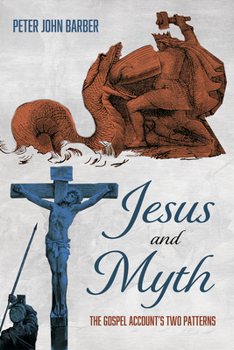Jesus and Myth: The Gospel Account's Two Patterns
Is Jesus mythological? And is he a mere product of his cultural milieu? Through narratological and social-scientific analysis of the gospel account, Barber systematically demonstrates that there are two opposing patterns structuring the gospel. The first is the pattern of this world, which is the combat myth, with a typical sequence of motifs having mythological meanings. It is lived out by everyone else in the accounts except Jesus, because this pattern of the world is the pattern of myth-culture, which is the pattern of the old Adam and sin nature. The pattern of Jesus is the pattern intended for Adam to walk in, and is the unique pattern of the new Adam, Jesus Christ. Jesus's pattern inverts the sequence and subverts the significance of each and every motif and episode of the myth-culture's pattern. Barber shows that Jesus's "failure" to conform to this world's mythological pattern establishes that he is not mythological, and not a product of his culture. As the apostle Peter states, ". . . we did not follow cleverly devised tales myths] when we made known to you the power and coming of our Lord Jesus Christ, but we were eyewitnesses of his majesty" (2 Pet 1:16).
Format:Hardcover
Language:English
ISBN:172525395X
ISBN13:9781725253957
Release Date:February 2021
Publisher:Pickwick Publications
Length:354 Pages
Weight:1.83 lbs.
Dimensions:0.8" x 7.0" x 10.0"
Customer Reviews
0 rating





